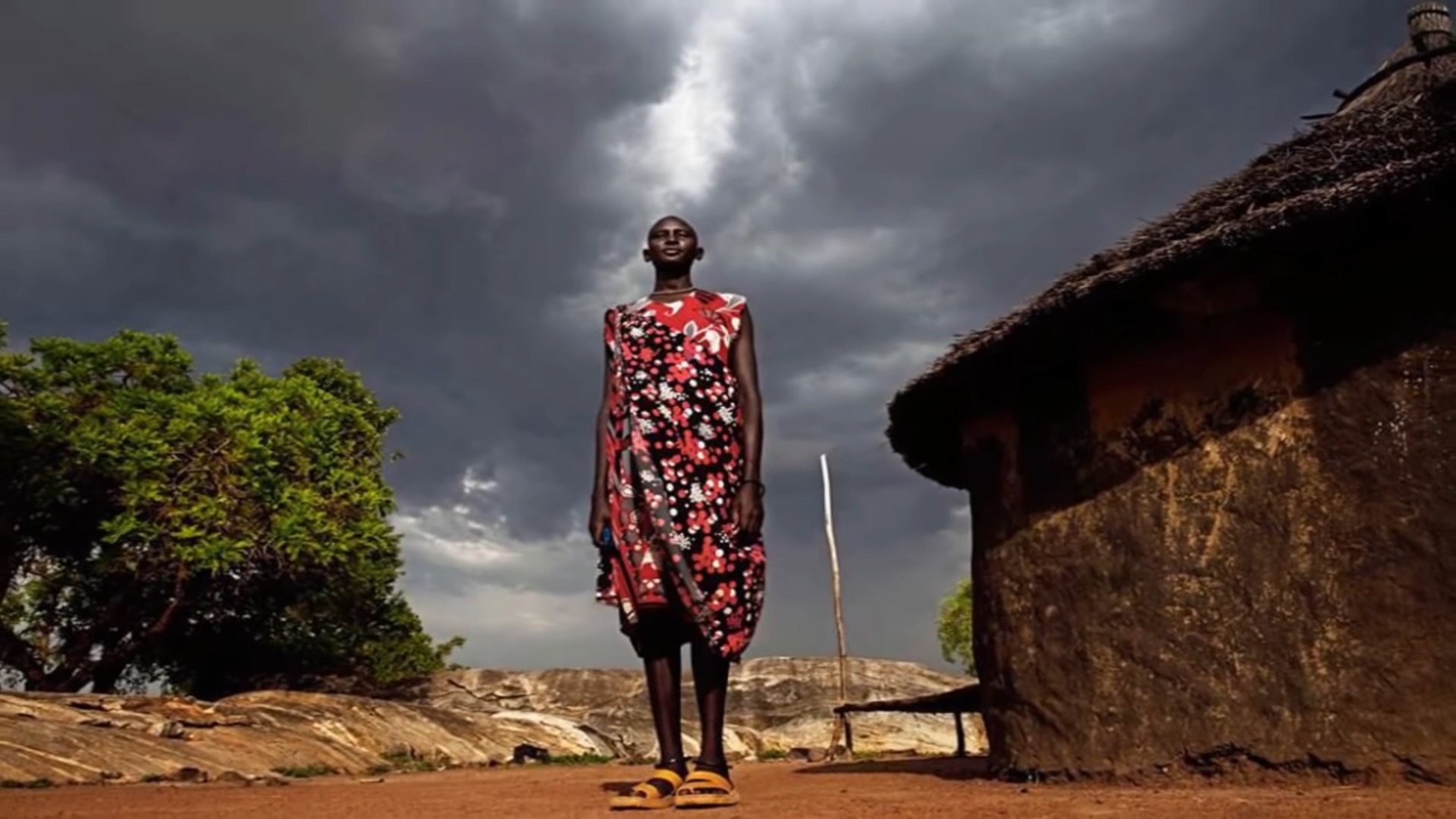Imagine life expectancy as a vibrant tapestry, each thread representing the myriad factors that intertwine to depict the vivid panorama of global health. This isn’t merely a collection of dry statistics; it’s a narrative of human experience, a story that unfolds within the borders of each country, telling tales of triumph and adversity.
In this analytical yet spirited exploration, we’ll traverse the globe, visiting the 30 countries that stand at the polar ends of the life expectancy spectrum. We’ll celebrate the nations that have mastered the art of longevity, and we’ll extend a compassionate gaze towards those still navigating the hurdles.
Through this journey, we’ll uncover the intricate patterns that contribute to the highest and lowest life expectancies worldwide, all while keeping our discourse engaging, insightful, and, dare we say, a touch more whimsical.
15 Countries With The Lowest Life Expectancy
In 2024, certain regions continue to struggle with remarkably low life expectancies. These figures are not just statistics; they represent the harsh realities and challenges faced by populations in these countries.
| Country | Life Expectancy | Key Challenges |
|---|---|---|
| Lesotho | 52 years | High prevalence of HIV/AIDS |
| Central African Republic | 53 years | Political unrest, limited healthcare access, poverty |
| Sierra Leone | 53 years | High infant and maternal mortality, malaria, HIV/AIDS |
| Chad | 54 years | Inadequate healthcare infrastructure, infectious diseases |
| Nigeria | 55 years | Infectious diseases, poor maternal health, inadequate healthcare infrastructure |
| Somalia | 56 years | Conflict, drought, famine conditions |
| South Sudan | 57 years | Civil unrest, lack of healthcare services |
| Eswatini | 57 years | High rates of HIV, though improving with better treatment access |
| Mali | 58 years | Malnutrition, malaria, tuberculosis |
| Guinea-Bissau | 58 years | Political instability, poverty |
| Cameroon | 58 years | Infectious diseases, inadequate healthcare services |
| Niger | 59 years | High birth rates, insufficient healthcare |
| Guinea | 59 years | Limited access to clean water and sanitation |
| Burkina Faso | 60 years | Poor healthcare infrastructure, environmental challenges |
| Mozambique | 60 years | HIV/AIDS and other infectious diseases |
Key Contributing Factors:
-
- Access to healthcare
- Nutritional deficiencies
- Prevalence of diseases
- Socio-economic instability
Lesotho
According to the World Bank, Lesotho faces a life expectancy of around 52 years. The high prevalence of HIV/AIDS significantly impacts this figure, despite improvements in treatment and awareness.
Central African Republic
As per study conducted by World Health Organization, the Central African Republic has one of the lowest life expectancies at just 53 years. Factors such as political unrest, limited access to healthcare, and widespread poverty contribute to this dire situation.
Sierra Leone
Sierra Leone reports a life expectancy of 60 years. The Centers for Disease Control and Prevention notes that high infant and maternal mortality rates, along with the prevalence of malaria and HIV/AIDS, are critical factors affecting life expectancy in Sierra Leone.
Chad
Chad’s life expectancy stands at 54 years stated by Macrotrends. The United Nations Development Programme highlights the impact of inadequate healthcare infrastructure and the burden of infectious diseases as significant contributors to Chad’s low life expectancy.
Nigeria
Statista says that In Nigeria, life expectancy is approximately 55 years. Infectious diseases, poor maternal health, and inadequate healthcare infrastructure are major contributing factors.
Somalia
Somalia’s life expectancy is at 56 years. The WHO reports that ongoing conflict, drought, and famine conditions severely affect the nation’s health outcomes.
South Sudan
With a life expectancy of 57 years, South Sudan’s challenges are compounded by civil unrest and a lack of healthcare services, as noted by World Health Organization.
Eswatini (formerly Swaziland)
Eswatini’s life expectancy is around 57 years. Despite high rates of HIV infection, there have been improvements due to better access to antiretroviral therapy.
Mali
Mali’s life expectancy hovers around 58 years according to Macrotrends. Health data suggests that malnutrition and infectious diseases like malaria and tuberculosis are persistent challenges.
Guinea-Bissau
Life expectancy in Guinea-Bissau is around 58 years. Data from the United Nations Development Programme emphasize the role of political instability and poverty in shaping these health statistics.
Cameroon
Cameroon’s life expectancy stands at about 58 years. Infectious diseases and inadequate healthcare services are significant challenges.
Niger
In Niger, the life expectancy is also around 59 years. Reports by UNICEF indicate that high birth rates and insufficient healthcare contribute to this situation.
Guinea
Life expectancy in Guinea stands at approximately 59 years. The World Health Organization notes that limited access to clean water and sanitation facilities exacerbates health issues in the country.
Burkina Faso
Burkina Faso sees a life expectancy of around 60 years.
Mozambique
Mozambique has a life expectancy of about 60 years. Impact of HIV/AIDS and other infectious diseases on the country’s life expectancy.
15 Countries With The Highest Life Expectancy
At the other end of the spectrum, several countries boast impressively high life expectancies, reflecting their success in creating environments conducive to health and longevity.
| Country | Life Expectancy | Contributing Factors |
|---|---|---|
| Japan | 84 years | Diet, healthcare system, physical activity |
| Switzerland | 83 years | Healthcare system, standard of living, active lifestyle |
| Spain | 83 years | Mediterranean diet, preventative healthcare |
| Australia | 83 years | Comprehensive healthcare system, public health campaigns |
| Canada | 82 years | Access to healthcare, public health initiatives |
| Italy | 83 years | Mediterranean diet, active lifestyle |
| South Korea | 83 years | Advanced healthcare system, health screenings, government health initiatives |
| Iceland | 83 years | Clean environment, high-quality healthcare, active lifestyle |
| Israel | 83 years | Strong healthcare system, Mediterranean diet |
| Sweden | 82 years | Well-funded healthcare system, social safety net |
| Norway | 82 years | Wealth, universal healthcare, public health policies |
| Luxembourg | 82 years | Wealth, comprehensive healthcare, social services |
| New Zealand | 82 years | Healthcare system, outdoor lifestyle, general well-being |
Key Contributing Factors:
-
- Advanced healthcare systems
- Healthy lifestyles and diets
- High socio-economic standards
- Effective public health policies
Japan
According to the Macrotrends, the country continues to lead with a life expectancy of 84 years. The Japanese diet, healthcare system, and societal norms around physical activity play pivotal roles in this achievement.
Switzerland
Switzerland’s life expectancy is 83 years. The Swiss Federal Statistical Office attributes this to the country’s robust healthcare system, high standard of living, and the active lifestyle of its citizens.
Spain
In Spain, life expectancy reaches 83 years. Mediterranean diet and the healthcare system’s emphasis on preventative care as key factors.
Australia
Australia boasts a life expectancy of 83 years. The Australian Institute of Health and Welfare credits a comprehensive healthcare system and a strong emphasis on public health campaigns.
Canada
In Canada, life expectancy is 82 years. The Public Health Agency of Canada highlights the country’s access to healthcare and public health initiatives as key factors.
Italy
Italy’s life expectancy stands at 83 years as per WHO
South Korea
South Korea’s life expectancy is impressive at 83 years. NCBI attributes this to the nation’s advanced healthcare system, widespread health screenings, and government-led health initiatives.
Iceland
Iceland boasts a life expectancy of 83 years. Country’s clean environment, high-quality healthcare, and active lifestyle as significant contributors.
Israel
In Israel, life expectancy is around 83 years. OECD credits a strong healthcare system and the Mediterranean diet, which is rich in fruits, vegetables, and healthy fats, as key factors.
Sweden
Sweden, with a life expectancy of 82 years, benefits from a well-funded healthcare system and a strong social safety net.
Norway
Norway enjoys a high life expectancy of 82 years as reported by Culture Trip.
Iceland
Iceland’s life expectancy is also 82 years. OECD notes the country’s clean environment, high-quality healthcare, and active population as contributing factors.
Luxembourg
Luxembourg enjoys a high life expectancy of 82 years. Statistics from European Commission highlight the country’s wealth, comprehensive healthcare, and social services as pivotal.
New Zealand
New Zealand’s life expectancy is at 82 years. WHO emphasizes the benefits of its healthcare system, outdoor lifestyle, and the general well-being and happiness of its population.
Norway
Norway also enjoys a life expectancy of 82 years. OECD notes the country’s high standard of living, universal healthcare, and public health policies as contributing factors.
The Integration of AI in Modern Healthcare
The landscape of healthcare is undergoing a transformative shift, thanks to the integration of artificial intelligence (AI). The AI sector within healthcare, valued at approximately $14 billion in 2020, is on an upward trajectory, with projections estimating its growth to reach around $119 billion by 2028.
This surge is indicative of AI’s expanding role in various health domains, including the promising field of anti-aging research.
Notably, AI-driven methodologies are being harnessed to develop drugs aimed at eliminating senescent cells, which are often implicated in age-related diseases such as Alzheimer’s and cancer.
In a groundbreaking development this year, researchers at Harvard Medical School engineered a series of chemical compounds that show promise in treating both mental and physical disorders.
These compounds, tested successfully on animal models, hold the potential to rejuvenate human cells and potentially reverse the aging process at the cellular level.
As AI and machine learning (ML) applications become increasingly prevalent in healthcare, they pave the way for potentially extending life expectancy.
This advancement is particularly significant in nations like Canada, Germany, Japan, China, and the United States, which are at the forefront of AI healthcare innovation.
Evolution of the Global Healthcare Sector
The healthcare industry is witnessing an unprecedented growth trajectory. Valued at approximately $104.44 billion in 2021, the sector is expected to soar to an estimated $272.76 billion by 2027, marking a compound annual growth rate (CAGR) of over 20%.
This expansion is driven by key players such as CVS Health Corp. (NYSE:CVS), UnitedHealth Group Inc. (NYSE:UNH), and McKesson Corp. (NYSE:MCK), each boasting multi-billion dollar revenues and specializing in diverse aspects of healthcare delivery.
CVS Health Corp. prioritizes holistic patient care, UnitedHealth Group provides insurance and advisory services, and McKesson Corp. extends its distribution and health services across North America and Europe.
The market capitalization of these giants underscores the scale of the industry, with UnitedHealth Group at the forefront with a valuation of $486.6 billion, followed by CVS Health at $124.8 billion, and McKesson at $53.3 billion.
This financial robustness reflects a broader trend towards more sophisticated and effective healthcare solutions, with an increasing public emphasis on health and wellness.
Governments worldwide are recognizing the importance of healthcare in enhancing life expectancy, particularly for the elderly, who are more vulnerable to health issues.
For instance, the United States allocates healthcare spending for seniors that is 2.4 times greater than for the younger demographic.
This investment in healthcare is a critical factor in the rising life expectancies observed globally. Research supports the notion that universal access to healthcare services can significantly extend human longevity.
This correlation is particularly evident in nations with advanced healthcare systems, where life expectancy rates are among the highest.
As the healthcare industry continues to evolve, it plays a central role in shaping a future where enhanced longevity becomes a more attainable reality for populations around the world.
FAQ
What role does genetics play in life expectancy?
Genetics can influence the predisposition to certain diseases and longevity. However, environmental factors and lifestyle choices often have a more significant impact on life expectancy.
How does income inequality affect life expectancy?
Income inequality can lead to disparities in access to healthcare, nutritious food, and safe living conditions, which can all contribute to lower life expectancy in underprivileged populations.
Can individual lifestyle changes impact a country’s average life expectancy?
While individual choices can improve personal health, widespread increases in life expectancy typically result from public health policies, healthcare access, and socio-economic improvements.
What is the impact of education on life expectancy?
Education can lead to better health outcomes by increasing health literacy, leading to healthier lifestyle choices and improved use of healthcare services.
How does climate change affect life expectancy?
Climate change can impact life expectancy by exacerbating health problems related to pollution, heatwaves, natural disasters, and the spread of infectious diseases.
Are there any new technologies on the horizon that could further increase life expectancy?
Advances in biotechnology, such as gene editing and personalized medicine, hold promise for treating previously incurable diseases and potentially extending life expectancy.
How does mental health affect life expectancy?
Mental health has a significant impact on physical health and longevity. Chronic stress, depression, and other mental health issues can lead to physical health problems that decrease life expectancy.
Final Words
As we reflect on the disparities in life expectancy around the globe, it’s clear that while genetics play a role, the quality of healthcare, lifestyle, and socio-economic factors are the primary drivers of longevity. The countries with the highest life expectancies share commonalities in their healthcare systems, public health policies, and standards of living. Conversely, those with the lowest life expectancies face challenges that require concerted global efforts to overcome. As we look to the future, the continued integration of technology and equitable healthcare practices stands as our best hope for closing these gaps and improving life for all.

























